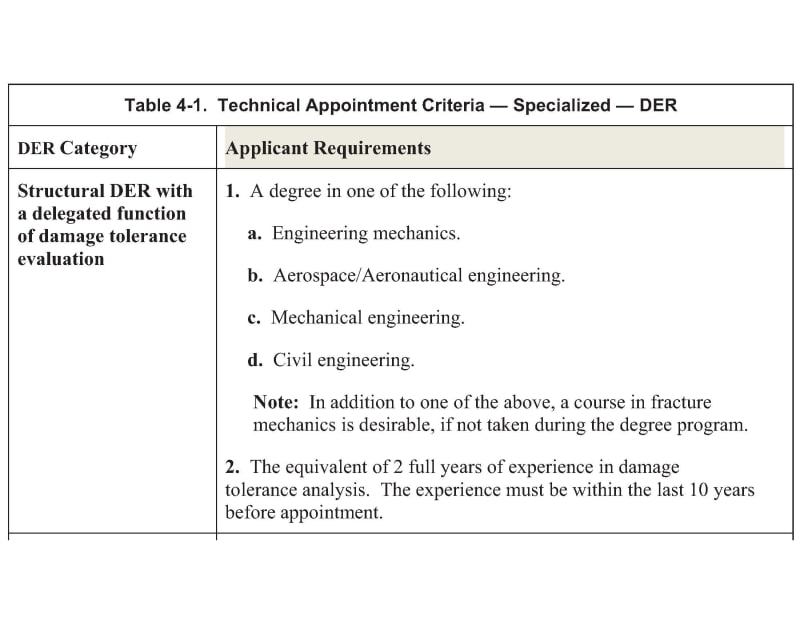SparWeb, I would partially disagree with the assertion that getting DT authority is harder now than 20 years ago. Current requirements are in Order 8100.8D (10/28/2011) Table 4-1, page 4-7:

This reads the same as Order 8110.37C (9/20/98), before appointment requirements were moved out at 8110.37D (8/10/06) into Order 8100.8. Order 8110.37B (11/12/96) changed the damage tolerance analysis experience requirement down to two years, from seven. My expansion of authority was done when Notice 8110.49 was in effect, in 1994, which had the highest requirements of all: eight years analysis experience and specialized course required, not ‘desirable’. Before Notice 8110.49 (which is NOT software Order 8110.49), Damage Tolerance DER’s were appointed/expanded on Tom Swift’s say-so. That would certainly have the appearance of being ‘easier’ than now. As far as other appearances, it only extended to two individuals, one of whom was his mentee/my mentor. But he was still consulted for my expansion, ACO’s continued to contact him for several years before switching over to doing DT DER appointments and expansions by the Order. It was never an official part of his job.
More noteworthy than his years at Douglas was Tom Swift’s tenure with the FAA as the NRS (National Resource Specialist, now called CSTA) in Damage Tolerance. He’s got some excellent historical papers especially on the DC-10. These may have contained more details than envisioned in the clearance to publish, but no harm no foul. More important than his published legacy was his kindness and patience. When passing through O’Hare he’d stop by the office, more of a social call with his former co-worker. But he always was gracious to spend some time with me, I recall him doing a derivation of why hoop/circumferential/tangential loads are examined separately from longitudinal loads, rather than a vector sum or Mohr’s Circle. Also I got some insight into his work on rivet stiffnesses (for joint analyses): it was more or less ‘goofing off in the lab’ decades before it was published, but has proven useful nevertheless. The finger doubler was just a suggestion, perhaps tongue-in cheek, Tom was very aware of the fabrication difficulties (and technician backlash).
Bob Eastin had some big shoes to fill after Tom retired (to a thatch-roofed house in the Lakes Country) but did admirably well as NRS in his own right. More Douglas connections.
Amen to relying on the government for approvals - hard to have a robust schedule, though I have frequently been impressed on turn time for Airworthiness Limitations and AMOC’s resulting from approved DT analyses. Double Amen to the new guy inventing something ‘better’. I don’t know if that is worse than “not invented here”. Same behavior, I guess.

